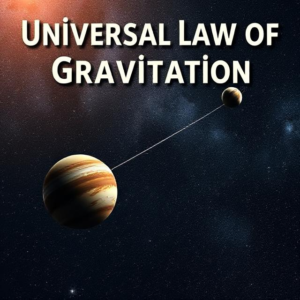What Are Tidal Forces?
Tidal forces refer to the stretching and squeezing effects caused by the gravitational pull of one body (like the Moon or the Sun) on another body (like Earth). These forces cause water levels to rise and fall, which is known as tides. Tidal forces don’t just affect water—they also influence the Earth’s shape, speed, and even its rotation.

How Do Tidal Forces Work?
- Gravitational Attraction: Every object with mass exerts a gravitational pull on other objects. This pull is stronger the closer the objects are to each other.
- The Earth and the Moon: The Moon has a gravitational pull on Earth, and Earth has a gravitational pull on the Moon. However, the Moon’s gravitational force on Earth is not the same everywhere—it’s stronger on the side of Earth that is closest to the Moon and weaker on the far side.
- Difference in Gravitational Pull: This difference in gravitational pull between the near side (closer to the Moon) and the far side (farthest from the Moon) causes Earth to stretch slightly along the line pointing toward the Moon. This stretching creates the bulge of water we call the high tide on the side of Earth facing the Moon.
- The Opposite Bulge: On the far side of Earth, there’s another bulge, which happens because the Earth itself is being pulled slightly toward the Moon, leaving the water behind. This creates another high tide, even though the far side is farther from the Moon.
- Low Tides: In between the two high tides, there are regions where the water level is lower—these are the low tides.
Why Do Tides Happen?
Tides happen because of the difference in the gravitational forces acting on different parts of the Earth.
- On the near side (the side of Earth closest to the Moon), the gravitational pull is stronger, causing the water to “stretch” and form a bulge.
- On the far side (the side of Earth opposite the Moon), the gravitational pull is weaker, and the water is “left behind,” forming another bulge.
This results in two high tides and two low tides every 24 hours and 50 minutes (a typical tidal cycle), with high tide occurring on the side facing the Moon and also on the opposite side.
Tidal Forces from the Sun
The Sun also exerts gravitational force on Earth, but it is less effective at creating tides because it is much farther away. However, the Sun’s gravity still affects the tides.
- When the Sun and Moon align (during full moons and new moons), their gravitational forces combine, and the tides are especially high and low. This is called spring tide.
- When the Sun and Moon are at right angles to each other (during the first and third quarters of the Moon), their gravitational forces partially cancel each other out, leading to neap tides, which are lower than normal.
Tidal Forces on Earth
Tidal forces affect more than just the ocean:
- Stretching of Earth: The Earth itself is stretched a little by the Moon’s gravity. This causes the Earth’s shape to change slightly, although it’s not something we can feel.
- Tidal Locking: Over long periods of time, tidal forces have caused the Moon to become tidally locked to the Earth. This means that the same side of the Moon always faces Earth. This happens because the Moon’s rotation has slowed down due to Earth’s tidal forces, and now its rotation period is synchronized with its orbit around Earth.
- Earth’s Rotation: Tidal forces between Earth and the Moon also slowly slow down Earth’s rotation. Over millions of years, this has caused Earth’s day to lengthen by about 1.7 milliseconds per century. The Moon is also slowly moving away from Earth at a rate of about 3.8 centimeters per year.
Examples of Tides
- Ocean Tides: The most visible effect of tidal forces is in the ocean. Coastal areas experience rising and falling water levels twice a day, which are the high tides and low tides caused by the Moon’s gravitational pull.
- Tidal Range: The tidal range is the difference in height between high tide and low tide. In some places, the tidal range can be very large (up to 16 meters, like in the Bay of Fundy in Canada), while in other places, the difference is much smaller.
Other Effects of Tidal Forces
- Tidal Heating: Tidal forces don’t just affect Earth and the Moon; they also occur in other objects in the Solar System, such as Jupiter’s moons. These tidal forces can cause tidal heating, where the constant stretching and squeezing of an object generates heat. This is responsible for volcanic activity on moons like Io, which is one of Jupiter’s moons.
- Tidal Forces on Planets: Even though Earth’s tides are mostly caused by the Moon, other planets and moons experience tidal forces, too. For example, Saturn’s moon Titan experiences tidal forces from Saturn’s gravity, leading to interesting effects on its atmosphere and surface.
Summary
- Tidal forces are caused by the difference in gravitational pull exerted by the Moon (and to a lesser extent, the Sun) on different parts of Earth. This creates bulges in the water and causes the high and low tides we observe in the ocean.
- The Moon’s gravity causes two high tides and two low tides on Earth each day.
- Spring tides occur when the Sun, Earth, and Moon are aligned, leading to especially high or low tides. Neap tides occur when the Sun and Moon are at right angles to each other, resulting in smaller tidal changes.
- Tidal forces can also affect Earth’s shape, rotation, and even the Moon’s orbit, causing long-term changes like tidal locking.
Tidal forces are a fascinating example of how gravity can influence the Earth and its neighboring celestial bodies in ways we might not always notice but that have significant effects over time.











